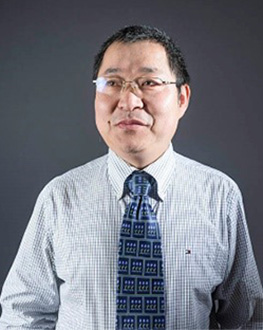THE 4TH INTERNATIONAL
SYMPOSIUM ON THERMAL-FLUID DYNAMICS
(ISTFD 2023)

THE 4TH INTERNATIONAL
SYMPOSIUM ON THERMAL-FLUID DYNAMICS
(ISTFD 2023)

Dr. Lixin Cheng
Beijing Key Laboratory of Heat Transfer and Energy Conversion, Beijing University of Technology, China
Department of Engineering and Mathematics,
Sheffield Hallam University, City Campus, UK
Dr. Lixin Cheng has worked at Sheffield Hallam University, UK since 2016. He obtained his Ph.D. in Thermal Energy Engineering at the State Key Laboratory of Multiphase Flow at Xi’an Jiaotong University, China in 1998. He has extensive international working experience at a several prestigious institutions. He was an associate professor at Aarhus University, Denmark in 2013 – 2015, a senior lecturer at the University of Portsmouth in 2011 – 2013, a lecturer at the University of Aberdeen, UK in 2009 – 2011.He was a scientific collaborator at the Swiss Federal Institute of Technology in Lausanne (EPFL) in 2006 – 2009. He was an Humboldt fellow at the Leibniz University of Hanover, Germany in 2004 – 2006. He was a senior research fellow at London South Bank University in 2001 – 2003 and a research fellow at Eindhoven University of Technology, the Netherlands in 2000 – 2003. He has received several prestigious awards such as Alexander von Humboldt Fellowship in Germany in 2006, an ERCOFTAC Visitor Grant in Switzerland in 2010 and a Distinguished Visiting Professorship of the City of Beijing, China in 2016 – 2021 and a visiting Professorship of Beijing University of Technology in 2023 - 2025.
His research interests are multiphase flow and heat transfer, thermal energy engineering, high heat flux thermal management, decarbonized heating and cooling technology, CO2 energy and power systems, renewable energy systems, hydrogen, new zero technology and circular economy. He has published more than 120 papers in journals and conferences, 9 book chapters and edited 10 books. He has delivered more than 60 keynote and invited lectures worldwide. He has been the chair of the World Congress on Momentum, Heat and Mass Transfer (MHMT) since 2017. He is one of the founders and co-chair of the International Symposium of Thermal-Fluid Dynamics (ISTFD) series since 2019. He is associate editor of Heat Transfer Engineering, Heat Transfer Research and Journal of Fluid Flow, Heat and Mass Transfer, and international advisor of Thermal Power Generation (a Chinese journal).
Title: Latest Development of a General Flow Pattern Map and Flow Pattern Based Mechanistic Heat Transfer Models for CO2 Evaporation in Macro- and Micro-channels.
Abstract:Considering the environmental and global warming issues, CO2 has no ozone depletion potential and a negligible direct global warming potential when used as a working fluid. CO2 has a low critical temperature of 31.1 °C and a high critical pressure of 7.38 MPa, therefore, CO2 is utilized at much higher reduced pressures in air-conditioning and heat pump systems compared to other conventional refrigerants while it is also used at lower reduced pressures in refrigeration and energy storage systems. As the effect of the thermophysical properties on the two phase flow patterns, evaporation heat transfer and two phase flow behaviors at wide range of reduced pressures, using CO2 in various thermal systems requires well understanding the physical mechanisms of evaporation processes and two phase flow phenomena, and developing generalized mechanistic heat transfer models based on flow patterns for macro- and micro-channels in order to design CO2 evaporators for high efficiency thermal energy and power cycles. This lecture presents the latest developed mechanistic models for CO2 evaporation heat transfer covering the reduced pressures from 0.1332 to 0.9082 (the corresponding saturation temperature from -40.6 to 26.77C), the channel diameter from 0.529 to 9.52 mm, the heat flux from 2 to 72 kW/m2 and the mass flux from 100 to 1500 kg/m2s. A comprehensive diabatic flow pattern map has been developed by considering the evaporation heat transfer mechanisms for various flow patterns at first. New criteria for dryout and mist flow regimes have been proposed. The flow pattern map is also applicable to adiabatic two phase flow. Furthermore, the evaporation heat transfer mechanisms are analyzed by considering the effect of reduced pressures and channel sizes. Then, generalized evaporation heat transfer models have been proposed based on the flow patterns. The models favorably predict the extensive experimental database in the literature and can be applied to the design of CO2 evaporators for various thermal and energy systems.